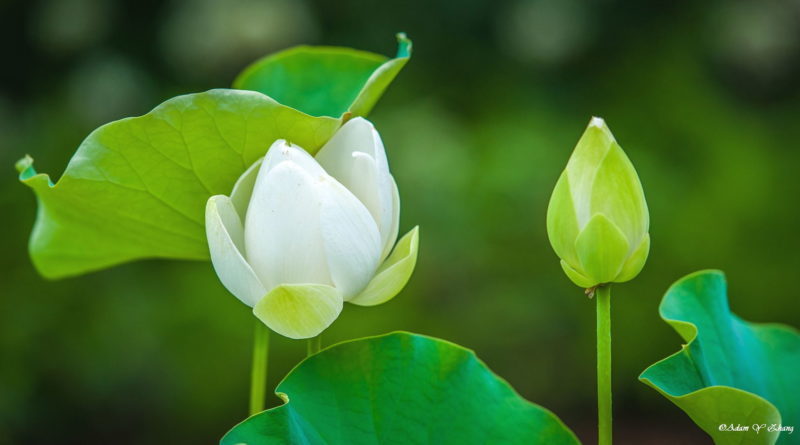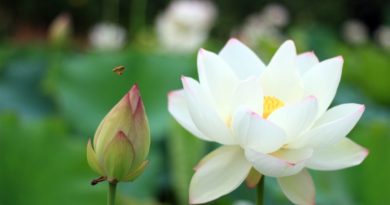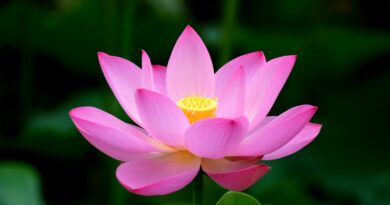THE PATTHANUDDESA DIPANI – CHAPTER 7: ANNAMANNA-PACCAYA
THE PATTHANUDDESA DIPANI – CHAPTER 7: ANNAMANNA-PACCAYA
What has been spoken of the paccaya-Dhammas in the classifications of the relation of coexistence is here (in this relation) the paccaya as well as the paccayuppanna-Dhammas. All states of consciousness and their mental concomitants are, reciprocally, the paccaya and the paccayuppanna- Dhammas; so are the coexisting Great Essentials; so are the mental aggregates of rebirth; and so is the basis of mind or heart-base which coexists with the mental aggregates of rebirth.
As to the sense implied here, it is easy to understand. However, an illustration will not be uninteresting. When three sticks are set upright leaning against one another at their upper ends, each of them depends on, and is depended on by, the other two. As long as one of them remains in such an upright position, so long will all remain in the same position. And, if one of them falls, all will fall at the same time. Exactly so should this relation of reciprocity be understood.
Here, if any one should assert that the mental properties are not able to arise without consciousness rendering them service as their base, we would acknowledge that this is so. Why? Because the function of knowing is predominant among the functions of contact, and so forth, of the mental properties, and, in the Dhammapada, as expounded by the Omniscient Buddha, ‘mind is predominant’ (Manopubbangama Dhamma, etc.) And again if anyone holds that consciousness also is not able to arise without the mental properties as a correlative, we will support this view. They (mental properties) are concomitant factors of consciousness; therefore, consciousness also is not able to arise without its accompanying mental properties. In a similar way are the four Great Essentials to be understood. But the mental qualities derived from them should not be counted as concomitant factors, for they are only derivatives. Then are the material qualities of life and those born of food not concomitant factors, seeing that they can exercise, individually, the causal relation of control and that of food? No, they are not. They may be taken as concomitant factors only when the development is in full swing, but not when things are only at the state of genesis. In this relation of reciprocity, the arising of concomitants at the stage of genesis is a necessary factor.
[End of the Annamanna-Relation]
What has been spoken of the paccaya-Dhammas in the classifications of the relation of coexistence is here (in this relation) the paccaya as well as the paccayuppanna-Dhammas. All states of consciousness and their mental concomitants are, reciprocally, the paccaya and the paccayuppanna- Dhammas; so are the coexisting Great Essentials; so are the mental aggregates of rebirth; and so is the basis of mind or heart-base which coexists with the mental aggregates of rebirth.
As to the sense implied here, it is easy to understand. However, an illustration will not be uninteresting. When three sticks are set upright leaning against one another at their upper ends, each of them depends on, and is depended on by, the other two. As long as one of them remains in such an upright position, so long will all remain in the same position. And, if one of them falls, all will fall at the same time. Exactly so should this relation of reciprocity be understood.
Here, if any one should assert that the mental properties are not able to arise without consciousness rendering them service as their base, we would acknowledge that this is so. Why? Because the function of knowing is predominant among the functions of contact, and so forth, of the mental properties, and, in the Dhammapada, as expounded by the Omniscient Buddha, ‘mind is predominant’ (Manopubbangama Dhamma, etc.) And again if anyone holds that consciousness also is not able to arise without the mental properties as a correlative, we will support this view. They (mental properties) are concomitant factors of consciousness; therefore, consciousness also is not able to arise without its accompanying mental properties. In a similar way are the four Great Essentials to be understood. But the mental qualities derived from them should not be counted as concomitant factors, for they are only derivatives. Then are the material qualities of life and those born of food not concomitant factors, seeing that they can exercise, individually, the causal relation of control and that of food? No, they are not. They may be taken as concomitant factors only when the development is in full swing, but not when things are only at the state of genesis. In this relation of reciprocity, the arising of concomitants at the stage of genesis is a necessary factor.
[End of the Annamanna-Relation]









